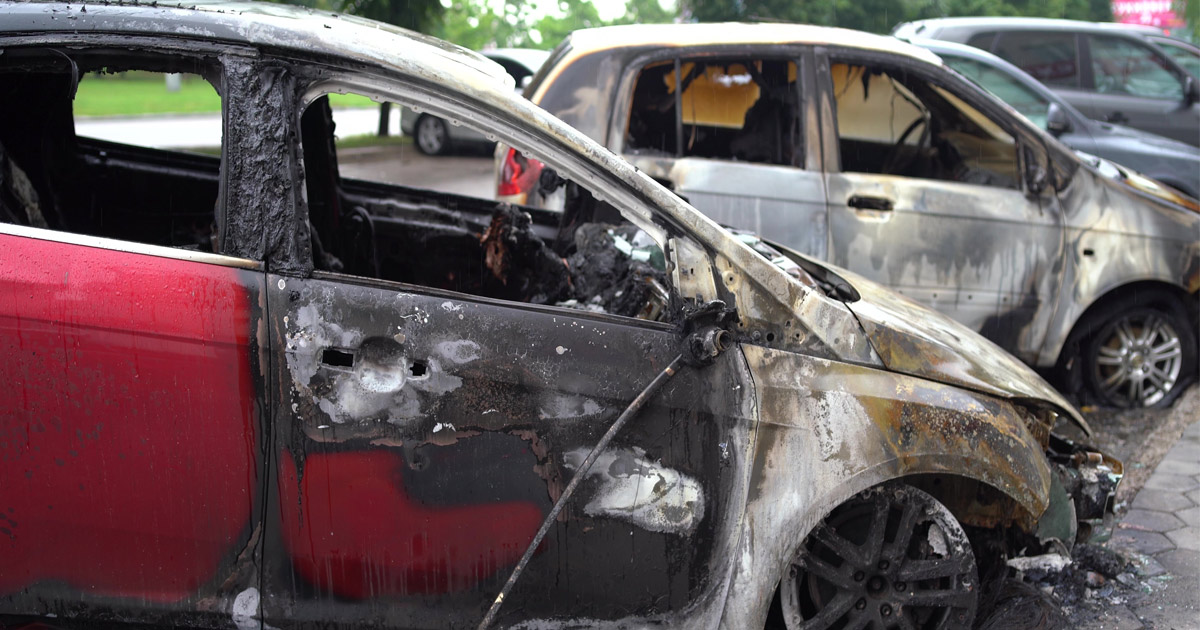What are the Top Causes of Vehicle Fires?
April 14, 2020
Vehicle fires are more common than you might think. More than 170,000 highway vehicle fires occur each year in the United States, which accounts to over 19 fires every hour. Although other types of fires are more common, vehicle fires are more likely to cause fatalities. Understanding the common causes of vehicle fires can help motorists take steps to prevent them.
According to the U.S. Fire Administration, passenger cars and trucks are responsible for most vehicle fires. These fires cause approximately 364 fatalities and 1,300 injuries each year, including burns, and roughly $1.1 billion in property damage. Burn-related injuries are extremely painful and often require multiple procedures to treat. The following are the most common causes of vehicle fires:
- Car accidents or some other unintentional action
- Equipment failure or heat source in the vehicle
- Heat from powered equipment, the engine, or drivetrain; sparks from friction or electrical arcs
- Open flame from smoking or other source
How to Prevent a Vehicle Fire
The best way to prevent a vehicle fire is to ensure that the vehicle is well maintained. Avoid having an open flame in or around your car. The following are examples of hazards that can increase the risk of a vehicle fire:
- Broken or loose hose
- Exposed or frayed wiring in the vehicle
- Spilled or leaking oil
- Blown fuse
- Loose wiring
- Loose or missing oil cap
- Rapid changes in fuel levels
- Fluctuations in engine temperature
If your vehicle does catch on fire, do not try to put the fire out yourself. Instead, take the following steps:
- Turn the car off.
- Exit the vehicle and quickly move away from the car, putting at least 100 feet between you and the burning car.
- Never attempt to open the hood, trunk, or doors, as this can feed the fire with fresh air.
- Call 911 and notify the operator of your location and provide as much detail about the fire as you can.
- Be aware that an explosion can cause metal and debris to hit you if you are standing too close.
- If you are using a fire extinguisher, make sure that you are standing at a safe distance from the car.
- Once the fire is put out, do not return to the vehicle until a firefighter says it is safe.
- Collect as much information as possible, including pictures, witness testimonials, and contact numbers for the police officers. You will need to provide this information to your insurance company to file a claim.
Baltimore Car Accident Lawyers at LeViness, Tolzman & Hamilton Represent Victims of Vehicle Fires
If you were injured in a vehicle fire, do not hesitate to contact the Baltimore car accident lawyers at LeViness, Tolzman & Hamilton. Our skilled legal team will walk you through the claims process and secure the maximum financial compensation you deserve. We will not stop fighting for you until you are completely satisfied. To schedule a free consultation, call us today at 800-547-4LAW (4529) or contact us online.
Our offices are located in Baltimore, Columbia, Glen Burnie, and Prince George’s County, allowing us to represent victims in Maryland, including those in Anne Arundel County, Baltimore County, Carroll County, Harford County, Howard County, Montgomery County, Maryland’s Western Counties, Prince George’s County, Queen Anne’s County, Southern Maryland, and the Eastern Shore, as well as the communities of Catonsville, Essex, Halethorpe, Middle River, Rosedale, Gwynn Oak, Brooklandville, Dundalk, Pikesville, Nottingham, Windsor Mill, Lutherville, Timonium, Sparrows Point, Ridgewood, and Elkridge.






